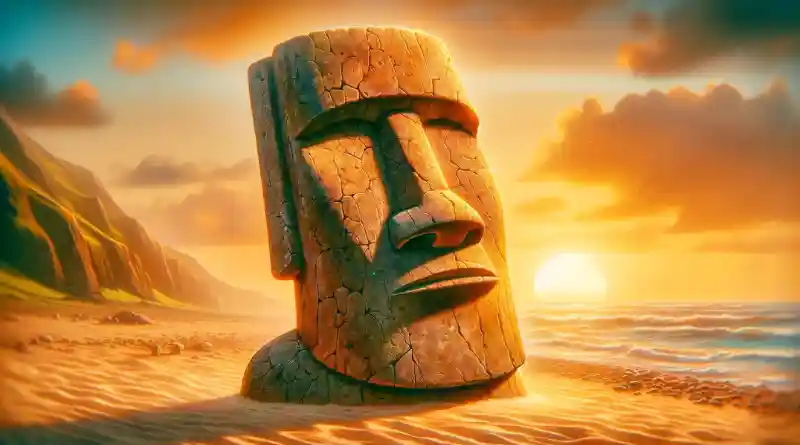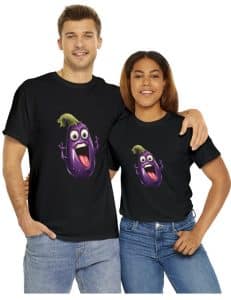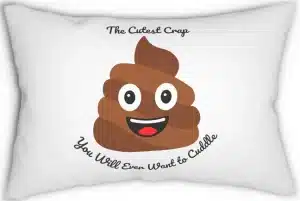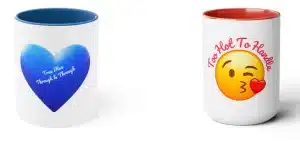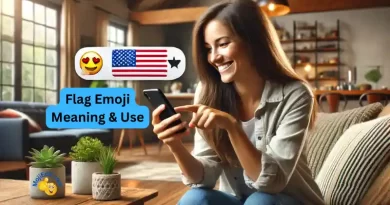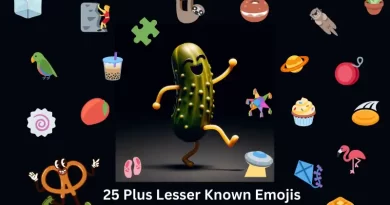Moai Emoji 🗿: Cultural Guide From Easter Island to Tokyo
Introduction: Discovering the Moai Emoji: A Symbol of Mystery and Fun
Hey there, emoji enthusiasts! 🙌 Today, we’re diving into the fascinating world of the Moai emoji (🗿). You might have seen this stone-faced icon pop up in your chats and wondered what it’s all about. Well, you’re in for a treat! The Moai emoji is more than just a quirky addition to your emoji arsenal—it’s a symbol steeped in history, culture, and a dash of modern internet fun. Let’s explore where it comes from, what it means, and how you can use it to spice up your texts and social media posts.
But first, a little background on those intriguing stone heads…
The Fascinating Origins of the Moai Emoji
Easter Island and the Rapa Nui People
The Moai statues are iconic symbols from Easter Island, or Rapa Nui, a remote island in the southeastern Pacific Ocean. These impressive stone figures were carved by the Rapa Nui people between the years 1250 and 1500. Each Moai statue, standing tall with a prominent brow and nose, represents the face of an important ancestor. These statues were placed on stone platforms called “ahu” to watch over the villages and were believed to hold spiritual significance, embodying the spirits of their chiefs and ancestors.
The Moai statues are made from volcanic tuff, a type of rock that was abundant on the island. Some of these statues can reach up to 33 feet in height and weigh as much as 82 tons. The sheer scale and the intricate craftsmanship involved in their creation are a testament to the ingenuity and dedication of the Rapa Nui people.
The Moyai Statue in Tokyo
Interestingly, the Moai emoji also has a connection to Japan. Near Shibuya Station in Tokyo, there’s a statue called the Moyai, which resembles the Easter Island statues. This statue was a gift from the people of Niijima, an island south of Tokyo, to the city of Tokyo. The emoji’s name, “Moyai,” and its design in some early Japanese emoji sets are inspired by this Tokyo landmark. This blend of cultural icons makes the Moai emoji a unique bridge between the ancient and the modern.
The Moyai Statue in Tokyo, unlike its ancient counterparts, is a symbol of cooperation and unity between the islands of Niijima and the city of Tokyo. It stands as a modern representation of cultural exchange and appreciation, showing how ancient art forms continue to inspire and connect us across time and geography .
The Journey to Unicode and Digital Platforms
Inclusion in Unicode
The Moai emoji made its way into the digital world when it was added to the Unicode standard in 2010 under the name “Moyai.” Unicode is the organization responsible for standardizing text and emoji characters across different platforms. This inclusion ensured that the Moai emoji could be used consistently on various devices and operating systems, from Apple and Google to Microsoft and more.
Unicode 6.0 marked a significant milestone for emojis, expanding the range of available symbols and allowing for greater expression in digital communication. The Moai emoji, with its unique cultural and historical significance, was a natural addition to this diverse set of characters. The Unicode code point for the Moai emoji is U+1F5FF, which helps standardize its usage across different digital platforms.
Design Variations Across Platforms
Each platform has its own take on the Moai emoji. For instance:
- Apple’s version emphasizes a clean, sculpted look with a prominent nose and brow.
- Google’s version features a more detailed stone texture.
- Microsoft’s version has a slightly more animated and rounded appearance.
These variations add a touch of uniqueness to how the emoji is perceived and used across different devices. For example, on Facebook, the Moai emoji has a more refined and polished look, while on WhatsApp, it appears more rugged and weathered, reflecting the diverse interpretations of the original statues.
Copy and Paste the Moai Emoji
Want to add the Moai emoji to your messages or posts easily? You can copy the Moai emoji and paste it wherever you need a bit of stone-faced charm. Just follow these simple steps:
- Click the “Copy” button below to copy the Moai emoji to your clipboard.
Emoji Copied! 🗿
- Go to the place where you want to use the emoji and right-click on the text field.
- Choose “Paste” from the context menu, or simply use the keyboard shortcut Ctrl + V (Windows) or Cmd + V (Mac) to paste the emoji.
And voilà! You’re all set to add some stoic charm to your conversations. 🗿
🗿- Modern Usage and Popularity
 Symbolism and Interpretations
Symbolism and Interpretations
The Moai emoji is often used to convey a sense of stoicism, resilience, or a deadpan expression. It’s perfect for those moments when you want to appear unbothered or when something just doesn’t impress you. For example, if someone tells you a joke that’s more “meh” than “haha,” you can respond with a simple 🗿 to show your indifference.
In addition to its stoic symbolism, the Moai emoji can also be used to represent solidity and strength, much like the statues themselves. It’s a way to show that you’re standing firm and unmovable, just like those ancient stone figures.
Social Media and Memes
On social media, the Moai emoji has become a favorite for memes and humorous posts. It’s frequently used in creative ways to add a layer of sarcasm or to poke fun at overly dramatic statements. Here are a couple of fun examples:
- When your friend is being overly dramatic about their minor inconvenience: “I have to wait five more minutes for my food 😒” 🗿
- To highlight a stone-cold reaction: “When you hear drama but it’s none of your business” 🗿
The emoji’s versatility makes it a fun and expressive tool in the digital age. It’s common to see it paired with captions that play on its stoic appearance, making it a perfect fit for dry humor and understated reactions (EmojiAll).
Fun Facts and Trivia
- Historical Significance: The original Moai statues were built to honor important ancestors and hold spiritual significance for the Rapa Nui people.
- Cultural Icon: The emoji is a cultural bridge, linking the history of Easter Island with modern Japanese landmarks like the Moyai Statue.
- Social Media Star: Its quirky appearance and stoic expression have made it a favorite in memes and online jokes.
How to Use the Moai Emoji in Texts and Social Media
Ready to get creative with the Moai emoji? Here are some fun ways to use it:
- Expressing Stoicism: Use 🗿 to convey a sense of calm, resilience, or unbothered attitude. For example, “Facing Monday like” 🗿.
- Adding Humor: Pair it with funny comments to highlight a deadpan or sarcastic tone. For instance, “When they ask if you’ve started your homework yet” 🗿.
- Cultural References: Use it when discussing history, travel, or cultural symbols. For example, “Learning about Easter Island today” 🗿.
- Creative Uses: Incorporate 🗿 into memes, jokes, or as a quirky response in group chats. For example, “Just chilling, being a rock star” 🗿.
Have fun experimenting and let your creativity flow!
 7 Moai Emoji Examples from my Texts
7 Moai Emoji Examples from my Texts
Let’s take a look at how I use the Moai emoji in my texts and social media posts. We’ll break down the meaning of each text and explain why the other emojis were used to emphasize certain feelings or ideas.
Example 1: “Ugh, Mondays… 🗿☕”
Meaning: Julia uses the Moai emoji to show her stoic, unbothered attitude towards Mondays, which are often dreaded. The coffee cup emoji (☕) complements this by indicating that coffee is her go-to solution for tackling the Monday blues.
Why these emojis?
- Moai emoji (🗿): Conveys a sense of stoicism and calm, as if she is unfazed by the typical Monday challenges.
- Coffee emoji (☕): Adds context to her coping mechanism, suggesting that a cup of coffee is what keeps her going.
Example 2: “That joke was so funny… not. 🗿😂”
Meaning: Julia uses the Moai emoji to show that she didn’t find the joke amusing at all, maintaining a deadpan expression. She pairs it with the laughing emoji (😂) to add a layer of sarcasm, making it clear that her reaction is intentionally over the top.
Why these emojis?
- Moai emoji (🗿): Represents her stoic, unimpressed reaction.
- Laughing emoji (😂): Used sarcastically to exaggerate the lack of humor, highlighting the contrast between her expression and the joke.
Example 3: “Exploring ancient history like 🗿📚✨”
Meaning: Here, Julia is expressing her fascination with ancient history. The Moai emoji symbolizes the historical aspect, while the book emoji (📚) and sparkle emoji (✨) show her enthusiasm and interest in learning.
Why these emojis?
- Moai emoji (🗿): Represents ancient history and the iconic stone statues of Easter Island.
- Book emoji (📚): Indicates study or learning.
- Sparkle emoji (✨): Adds excitement and a sense of discovery to the topic.
Example 4: “Feeling unbothered and zen today 🗿🧘♀️🌿”
Meaning: Julia uses the Moai emoji to show that she is calm and composed. The yoga emoji (🧘♀️) and leaf emoji (🌿) emphasize her peaceful and relaxed state, suggesting a zen-like tranquility.
Why these emojis?
- Moai emoji (🗿): Conveys calmness and stoicism.
- Yoga emoji (🧘♀️): Symbolizes relaxation and mindfulness.
- Leaf emoji (🌿): Adds a natural, serene element to the overall feeling of peace.
Example 5: “When the drama isn’t yours 🗿🍿”
Meaning: In this text, Julia is indicating that she’s watching drama unfold without getting involved. The Moai emoji shows her indifferent attitude, while the popcorn emoji (🍿) adds a humorous touch, suggesting she’s just there to watch the events play out.
Why these emojis?
- Moai emoji (🗿): Represents her disinterested, unaffected stance.
- Popcorn emoji (🍿): Adds a playful element, indicating she’s watching the drama like a spectator.
Example 6: “Feeling good today! 😃🗿”
Meaning: Julia uses the smiley face emoji (😃) to show her happiness and positive mood. The Moai emoji complements this by adding a layer of calmness and steadiness, indicating that she feels good and composed.
Why these emojis?
- Smiley face emoji (😃): Conveys happiness and positivity.
- Moai emoji (🗿): Adds a sense of calm and steadiness to her good mood, showing that she is happy yet composed.
Example 7: “Silent but strong 💪🗿”
Meaning: In this text, Julia uses the Moai emoji to emphasize a silent yet powerful demeanor. The flexed bicep emoji (💪) underscores the strength aspect, highlighting a combination of quiet confidence and physical strength.
Why these emojis?
- Moai emoji (🗿): Represents silence and stoicism.
- Flexed bicep emoji (💪): Symbolizes strength and power, reinforcing the message of quiet confidence.
By combining the Moai emoji with other relevant emojis, Julia effectively conveys her emotions and reactions in a fun and engaging way. Each additional emoji adds depth to her message, making her texts more expressive and relatable.
Conclusion
To sum up, the Moai emoji is more than just a digital icon. It’s a symbol with a fascinating history and a beloved character in modern online culture. Whether you’re using it to express stoicism, add humor, or reference cultural landmarks, the Moai emoji is a versatile and fun tool in the world of emojis. So, next time you’re texting or posting on social media, remember to give 🗿 a try and see how it can add a unique touch to your messages.
Moai Emoji Frequently Asked Questions and Answers
The Moai emoji (🗿) represents the iconic stone statues from Easter Island, known as Moai, which were carved by the Rapa Nui people. These statues are significant cultural symbols and are believed to honor important ancestors. The emoji typically depicts a gray stone face with a prominent nose and a square-shaped head.
Yes, there is a subtle difference. While the Moai emoji represents the Easter Island statues, the Moyai emoji refers to a similar statue located near Shibuya Station in Tokyo, Japan. However, both emojis are often used interchangeably.
The Moai emoji is sometimes referred to as the “Stone Face” or “Rock” emoji due to its appearance as a carved stone face. These alternative names highlight its material and stoic expression.
The Unicode code point for the Moai emoji is U+1F5FF. This code point is part of the Unicode standard, which allows the emoji to be used across different platforms and devices.
While the Moai emoji is widely used and recognized, it’s always good to be mindful of its cultural significance. The Moai statues are important cultural symbols for the Rapa Nui people, and using the emoji in contexts that respect its heritage is always appreciated.

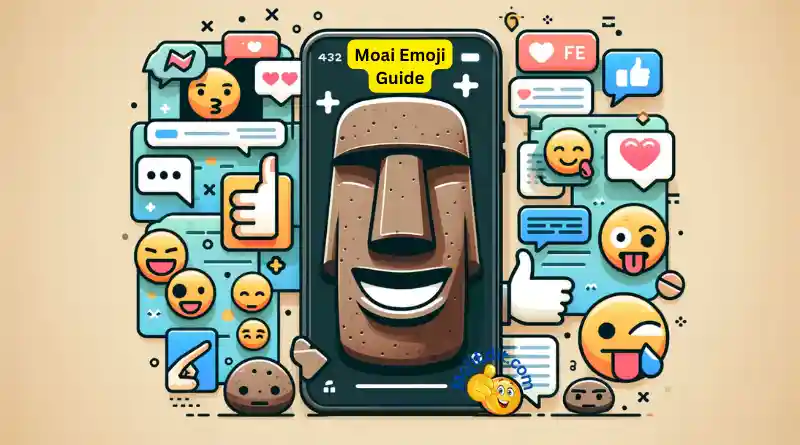
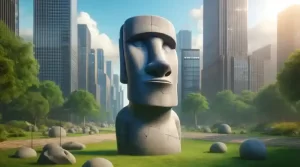 Symbolism and Interpretations
Symbolism and Interpretations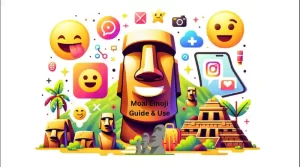 7 Moai Emoji Examples from my Texts
7 Moai Emoji Examples from my Texts